Warcraft Conquest d20
v3.0 Release Candidate
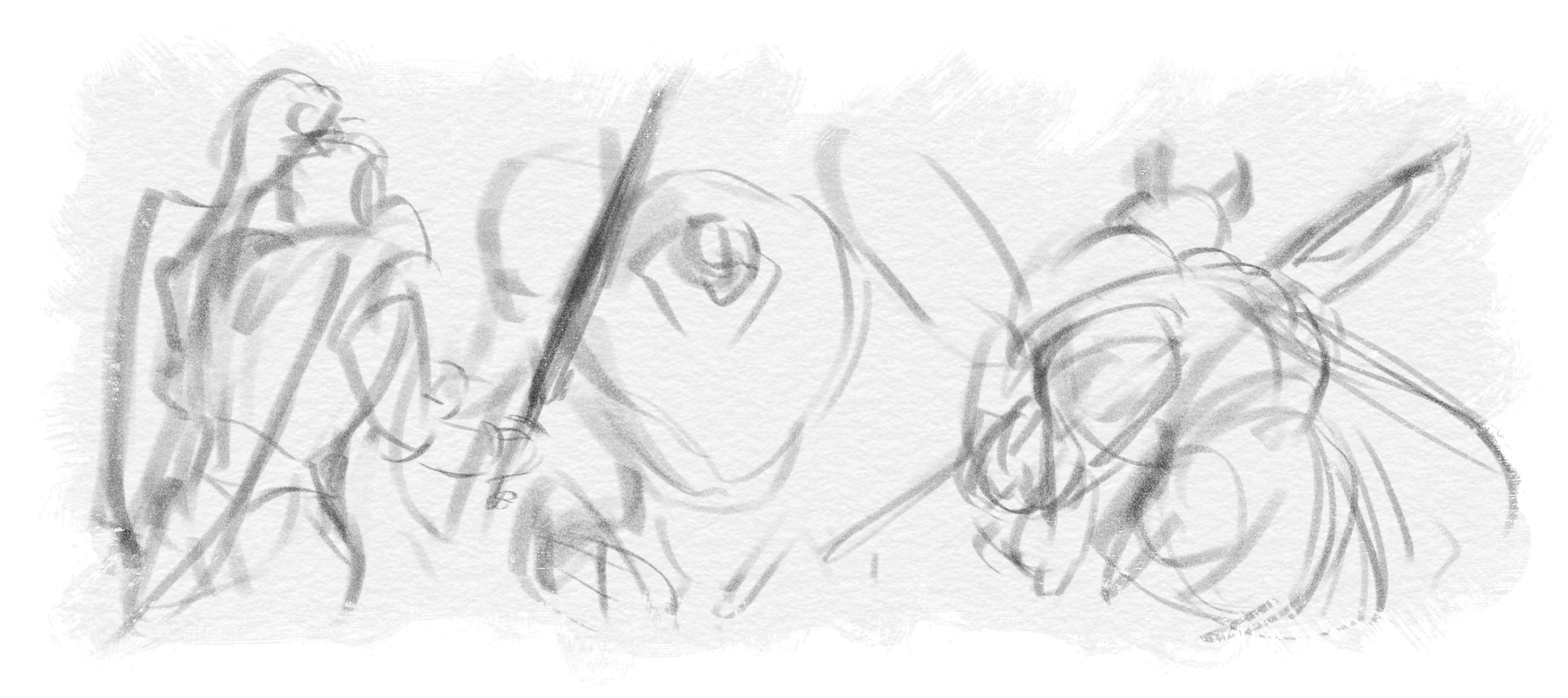

Introduction
Long have we debated if a given spell can penetrate a dragon's scaly hide, if a Ranger's arrow finds its mark in a trespasser's armor, or if a warlock can convince the king's guard that they are not secretly three demons in disguise. And for just as long, we've turned to the randomness of a die roll to direct where a collaborative story will go when an outcome isn't certain. And that is what is at the heart of this system.This is a narrative-first system, and as such, there is no winning or losing as it is typically understood. This is collaborative storytelling, and like any good storytelling, there is a tension to the dramatic tale being crafted. There will be times when our protagonists move closer to their objective, and times when it will feel even more out of reach based on choices made and the roll of the dice. But through it all, we hope you are engaged in the tale being crafted and have a blast writing adventures alongside your fellow collaborators!
Building Your Character
All characters are made up of 3 basic components:
1) Their Health (HP), which is a measure of their well-being.
2) Their Ability Points (AP), allowing them to adjust fate in their favor.
And 3) The Perks that allow them to shine in accordance to their personalities, specializations, and skill sets.
All Player Characters start with 8 Hit Points, 14 Ability Points, and 5 Perks of their choosing.
Health is a representation of your character's wellbeing and their ability to stay active in the encounters.
Ability Points represent everything from your luck to your mana/energy/focus/runic power/holy power/etc. These points are your way of allowing your character to show off or recover on checks you believe they should excel, even when the dice are against you.
They can be spent to activate perks or modify rolls. It takes 1 Ability point to modify a roll by 1. So a roll result of 10, with 3 powerpoints used, becomes a roll of 13. These can be spent on any rolls made by the player, unless told otherwise.

The Character Sheet
Below are the 3 basic components of a character sheet.
• Their Health, or Hit Points (HP). The baseline of which is 8 HP.
• Their Ability Points (AP), which allows them to manually adjust their rolls. Characters typically start events with 14 Ability Points.
• Up to 5 Perks

Baseline HP = 8
Ability Points = 14Perk 1
Perk 1's Description
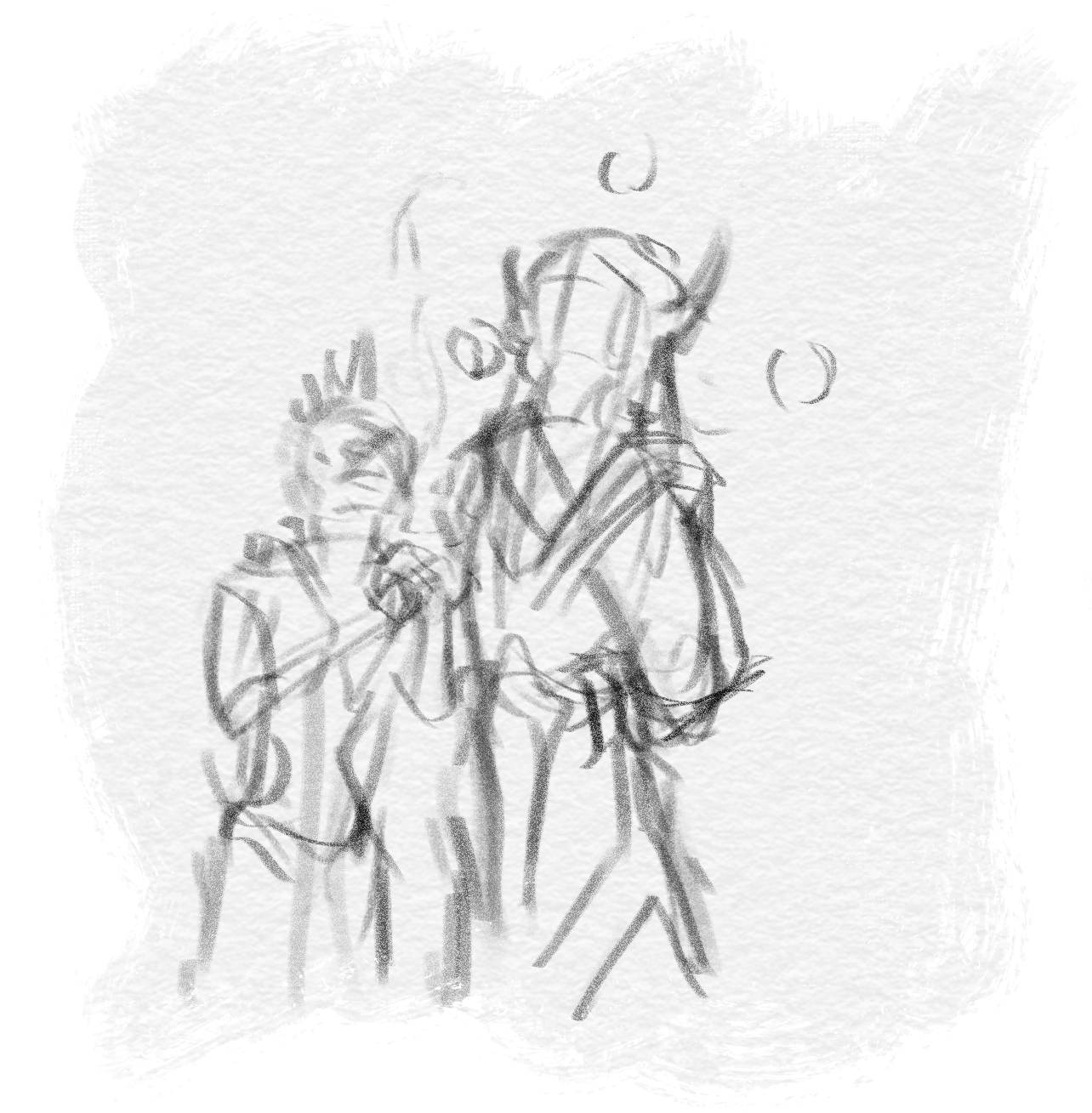
A Shaldorei Archmage teaching a new Forsaken student the Arcane Arts

Quick Start Character
To demonstrate character creation, we are going to very quickly build a character that we can use to jump straight into the action.We'll start by giving ourselves 8 Hit Points and 14 Ability Points.And then we'll pick 1 Role perk to showcase our character's specialization. Lets say we're playing an Orc Blademaster, so we're going to pick up Offensive for that free extra point of damage to our total.We're not going to pick any more perks, so we'll be leaving 4 perk slots open. Those empty perk slots will give us 2 extra Ability Points per empty slot, for an additional 8 AP, or 22 AP total.So now we have a character with 8 Hit Points, 22 Ability Points we can use to modify our rolls, and we get a free point of damage each turn we deal any kind of damage. We've finished making our character, now it's time to play!
Baseline HP = 8
Ability Points = 22Perk 1/5: Offensive (Role)
Type: Passive
When you spend atleast one success to deal damage on your turn, you can add +1 to the total amount of damage dealt this round.
How To Play

Art TBD
The system, like previous versions, unfolds in the following way:
1) The GM ("Game Master", the one running the event), describes what is going on, often calling for a roll of some kind.2) The players will /roll 20 and narrate how their characters spend the round based on their results.3) The GM then describes what happens as a result, updating the situation, and often calling for another roll of some kind as the start of a new round.
The cycle repeats this back and forth between the GM and Players for the duration of the event.Below are the finer rules that govern this general structure of gameplay. Every time the players' actions have been concluded and the GM advances the scene, even in a non-combat structure, it marks the start of a new round.

/Roll 20
A roll check is a way of measuring what can be accomplished within the time frame of a round. A player makes their roll depending on the type of roll the GM has called for, and then can spend the results in any way they wish.There are two types of Rolls a GM will call for, the Standard check, and the Environmental check. The Environmental check is a reaction-only roll, often tied to a trait (Body, Intelligence, or Presence), and does not allow for players to act beyond that scope. All other rolls will be Standard checks.All rolls in this system are /roll 20, generating a result of 1-20 before any modifiers.Modifiers—from the GM, the condition track, and/or from perks and Ability Points—can occasionally cause the roll results to be outside of the 1-20 range. More on these critical effects will come later.Successful roll results can be spent freely by the player. A roll of 17, for example, can be used to deal 1 point of damage of an enemy, restore 1 health to the player, and mitigate 1 incoming damage from an ally.
Roll Result Table
| Dice Result | Standard Roll Result | Environmental Roll Result |
|---|---|---|
| <0 | -6 Health | -6 Health |
| 0 to 4 | -4 Health | -4 Health |
| 5 to 8 | -2 Health | -2 Health |
| 9 to 12 | 1 Success | Safe |
| 13 to 16 | 2 Successes | |
| 17 to 20 | 3 Successes | Can save 1 ally |
| 21 to 24 | 4 Successes + Crit | |
| 25+ | 5 Successes + Crit | Can save 2 allies |
RP Etiquette Tip: Remember to whisper to a player when you do something that affects them—such as healing them, saving them from damage, or buffing their next roll. There may be many emotes flying about, and a whisper is more likely to be seen!

Spending Successes
Players do not have to be limited to just Damage, Healing, or Damage Mitigation, although they are the bread and butter of what you can accomplish in a round. A player may opt into trading their successes for any effect from the table below. An example would be an augmentation Evoker or a classic ttrpg style Bard who are more interested in supporting their allies than dealing damage or healing! Or, if you feel confident an enemy is going to be brought down by your allies before you finish your emote, you can turn those leftover successes back into Ability Points for later.Outside of granting an ally a crit, every effect costs 1 Success generated from a roll.
| Cost | Effect |
|---|---|
| 1 Success | Deal 1 Damage to an enemy |
| 1 Success | Heal yourself or an ally 1 HP |
| 1 Success or Hit Point | Mitigate 1 Damage from being taken by an ally |
| 1 Success | You or an ally may recover 2 Ability Points |
| 1 Success | Move yourself or an ally +2 on the Condition Track |
| 1 Success | Apply 1 Skill push toward the narrative situation |
| 3 Successes | Grant an ally the use of a Critical effect. |
• Damage—Deal damage to an enemy. Cannot be used with environmental rolls.• Healing—Restore the health of an ally or yourself. Cannot be used with environmental rolls.• Mitigate Damage—Shield a character from taking damage. Over Mitigating damage results in a +1 move (per point of Mitigation) on the condition track for the shielded player. Health spent activating this option cannot be mitigated.• Recovering—Restores 2 Ability Points per success to yourself or an ally.• Boosting—Improve the conditions a character is operating under so that they can perform better.• Skills—Effort are often put toward skills in attempts to modify the environment or context by the players, such as efforts toward a narrative objective. Non-combat skills like Perception, Social, and Knowledge checks would fall under this category. Not all encounters will allow for this option, and some objectives might require more than 1 success to be spent for the desired effect.
Dev Note: This is a narrative-first system, so the order of effects that happen within a round is up to the players affected. Some will want to play it safe and apply damage last, and others may play up the dramatic angle! Any minutia is up to the player affected.

Criticals
Critical results allows the player to do one of two things: 1) Activate any Active Perk your character has, immediately, and free of cost and all other restrictions, OR 2) Roll twice and take the higher result on your next roll.Crits can occur in three ways, but only one crit can be generated at a time by a player.1) when a player rolls a "natural 20", which is a die roll result of 20 before any modifiers are applied. All players have a 5% chance of this happening on every /roll 20.2) A player can create their own crit by getting a final result of 21 or higher after modifiers are applied. If the dice are not favoring you, you can still wrestle a crit out of them by reaching any result of 21 or higher through resources, abilities, allies, and anything else you have at your disposal to adjust a roll.Or 3) by being gifted a crit from another player. Your roll result still stands, but now you have a crit to work with in addition to your roll.
Gameplay Tip: Crits do not require a high result; Merely a stroke of luck, heroism, or teamwork.
Non-combat and Narrative Encounters
Non-combat-based encounters are run just like combat encounters are, but utilize the standard roll table in a narrative-forward way. You roll on the Roll Result table, but instead of dealing damage, healing, or mitigating a threat, you accrue successes.Depending on the nature of the non-combat encounter, damage may not make sense to impose on the player. In these cases, the player will move that amount down on the condition track.
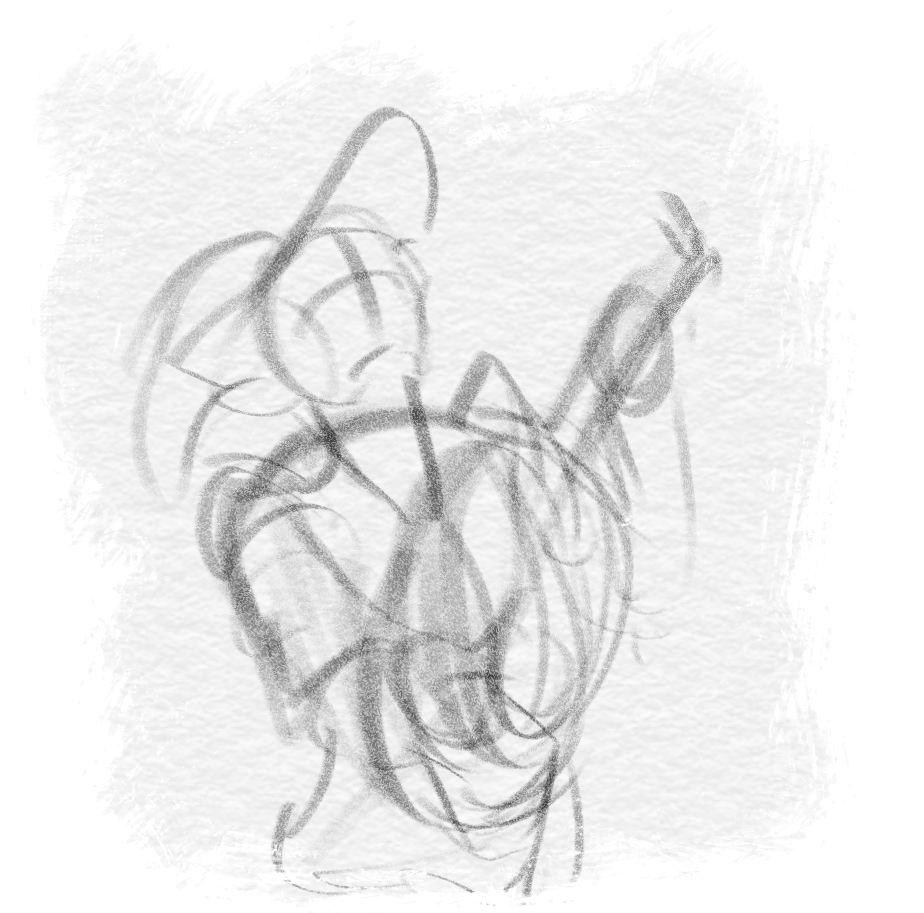
A Human Bard playing a tune for their friends
For example, a small group of bounty hunters (the players) are after their high-value prize. Player A rolls a 13, giving them 2 successes in their ability to find their target's tracks. Player B, meanwhile, is trying to gather information from the locals and rolls a 6 for a -1. Instead of taking damage, they decide they have become frustrated with the local's dialect, and will move -1 on the condition track.
Skill Checks and Successful Efforts
Because a roll is a measure of what can be accomplished during a round, not all objectives can be met with a single Skill push. Some checks may require a number of successes to be accumulated by the group before they can accomplish the check. This difficulty is determined by the DM.More difficult challenges may require more effort and application of skills, and more successes may result in better outcomes.
For example, Player A and Player B are still hunting down their contract and they come across a warded lair. They both roll to deal with the ward, resulting in 1 success spent between them. The DM conveys that the ward is down, yes, but they've alerted their prey with the ward going down. They had the success needed to accomplish their goal and move forward, but not enough for a more flawless outcome.
Conditions and fallen heroes
Any good narrative is a push and pull against our protagonists. Sometimes they are on top of the world, and sometimes the odds are stacked against them. In this system, this is handled by the Condition Track as a universal system for buffs and debuffs. If you have an advantage, you receive a boon to your roll. When you're at a disadvantage, you will take a penalty.
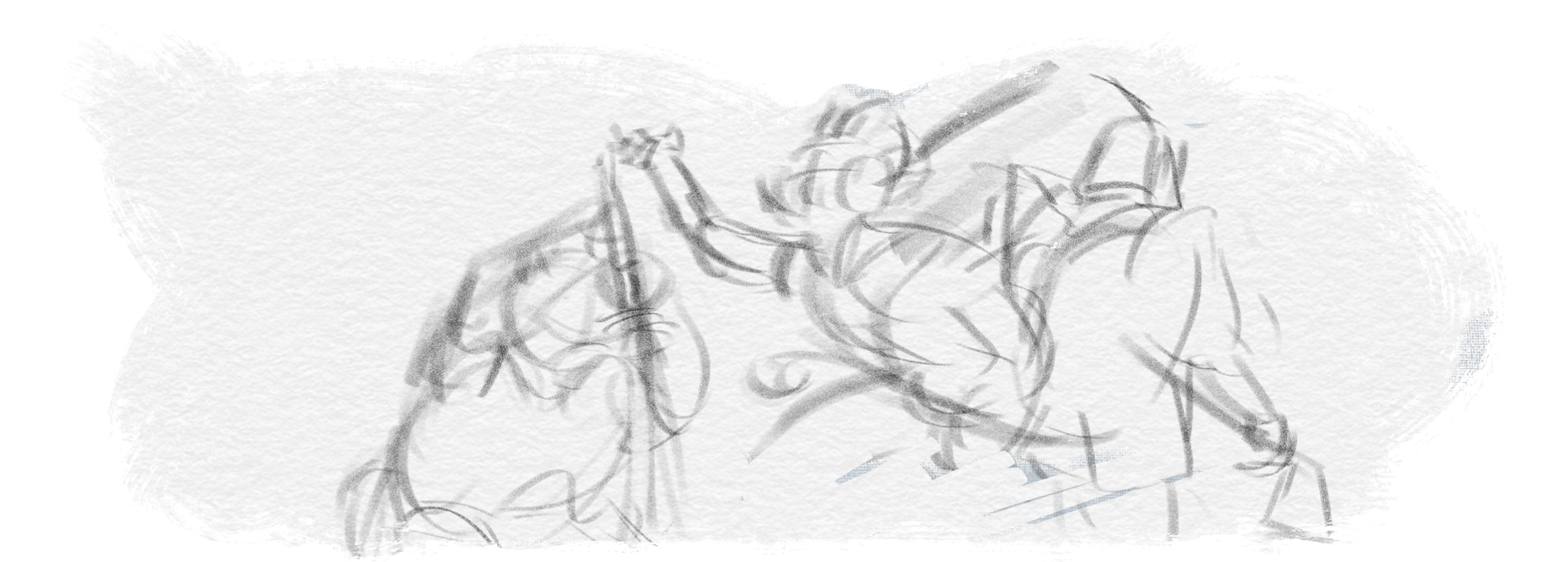
A Dwarven vanguard protectes a Troll Witch Doctor healing a Stormwind Knight.

The Condition Track
The condition track is a universal buff and debuff system. Anytime a player receives a buff, they go up +1 tier on the condition track. Anytime they are debuffed, they go down -1 tier on the track. This is cumulative; And, unlike check results, continues beyond the table shown in both directions. Eg. Receiving buffs from 3 allies will yield +3 movement on the track for the receiving player. If you receive 2 buffs (+2 on the ct) and 1 debuff (-1 on the ct), you simply find the net result: a +1 on the Condition track.A change in condition is applied at the start of the next round, and then the tracker resets to 0. Some conditions imposed by the DM may last longer.
| Condition Track | Effect |
|---|---|
| ⮝ | ⮝ |
| +5 | +5 to all rolls |
| +4 | +4 to all rolls |
| +3 | +3 to all rolls |
| +2 | +2 to all rolls |
| +1 | +1 to all rolls |
| Normal | No Effect |
| -1 | -1 to all rolls |
| -2 | -2 to all rolls |
| -3 | -3 to all rolls |
| -4 | -4 to all rolls |
| -5 | -5 to all rolls |
| ⮟ | ⮟ |
Fallen Heroes
Sometimes, things get dire for our protagonists. When you reach 0 HP, you become Knocked Out (KO'd). With the help of teammates and perks, you can get back up after having atleast 3 Health restored back to you, and return to action with that 3 HP.
Perks
Perks are an optional mechanic to add complexity to characters and modify the gameplay. They also are your options for critical effects. A player may only have up to 5 perks selected for an event. You can use a perk as many times as you can afford to activate it. For Conquest events, each player is limited to 3 General Perks and Active Perks are constrained to one target each round.For every perk slot that you opted not to fill, increase your max Ability Points by 2. So if you only took 3 of a possible 5 perks, you gain 4 extra max AP because of the fewer perks selected.Passive perks are always active.Active Perks listed as "Quick" can be rolled alongside your normal combat roll.Active Perks listed as "Slow" take time to perform, and thus forgo any combat roll. For these perks, you must make this choice before rolling.This Perk list is laid out by speed of the perks (Passive, Quick, and Slow) and then by Alphabetical order. The list can be easily expanded and loadouts changed with optional additions by GMs, Guilds, and so forth. For more information on that, view the Customizing the System and Homebrewing sections.
Dev Note: There is a player-specific optional rule for perks to use Charges instead of costing AP under the Optional Rule section. Any player can opt into that mode of play.

Category: Role
Up to 1 perk may be chosen from this category.
Bulwark
Type: Passive
+4 to your maximum HP pool.
Defensive
Type: Passive
When you spend atleast one success to mitigate damage on your turn, you can add 1 to the total amount of damage mitigated this round.
Healer
Type: Passive
When you spend atleast one success to heal damage on your turn, you can add +1 to the total amount healed this round.
Offensive
Type: Passive
When you spend atleast one success to deal damage on your turn, you can add +1 to the total amount of damage dealt this round.
Resourceful
Type: Passive
-1 AP cost to activate a Perk, to a min of 1.
Support
Type: Passive
When spending successes or using perks to affect an ally (healing, mitigation, moving them on the condition track), move yourself +1 on the condition track at the start of your next turn.

Category: General
Multiple perks may be chosen from this category.
Font
Type: Passive
Restore 1 AP to yourself every turn that you do not take damage. You cannot use successes to restore AP to yourself if this perk is taken.
Stamina
Type: Passive
+2 to your maximum HP pool.
Altruism
Type: Active (Quick)
Cost: 3 AP
Double the amount of damage you can mitigate when spending HP instead of successes.
At Any Cost
Type: Active (Quick)
Cost: 4 AP
Generate 1 success per activation of this perk. This does not change your roll result.
Blessing
Type: Active (Quick)
Cost: 4 AP
May do either of the following per activation:
• Move a single ally +4 on the condition track at the start of the next turn.
• Move two allies +2 each on the condition track at the start of the next turn
Bloodlust
Type: Active (Quick)
Cost: 2 AP
When you take damage, instantly move +1 on the condition track at the start of your next turn for each point of damage taken.
Companion
Type: Active (Quick)
Cost: 2 AP
May do any of the following once per round:
• +1 healing, damage done, or damage mitigated
• 5 AP; Prevent you or an ally from dropping to 0 HP (perk cannot be used again afterward)
Counter Attack
Type: Active (Quick)
Cost: 3 AP
Immediately deal double the damage mitigated from you or an ally at a nearby enemy.
Infusion
Type: Active (Quick)
Cost: 3 AP
Restore 1 AP to an ally for every point of damage you do this round.
Inner Focus
Type: Active (Quick)
Cost: 3 AP
When you heal an ally, they move +1 on the condition track at the start of the next turn for every point of healing done.
Inspire
Type: Active (Quick)
Cost: 4 AP
Negate up to 2 damage taken by an ally and immediately grant them 2 Damage, Healing, or AP restored.
Leech
Type: Active (Quick)
Cost: 4 AP
Heal yourself for 1 HP for every 1 point of damage dealt this turn.
Merely a Setback
Type: Active (Quick)
Cost: At least 1 Damage taken from a Failure and 4 AP
Store all the damage you take this turn, automatically unleashing it all at once upon your next success. Does not negate damage taken. Multiple consecutive rounds may add to the stored damage.
Onslaught
Type: Active (Quick)
Cost: 3 AP
Once per round, move yourself +1 on the condition track at the start of your next turn for one of the following:
• Each point of damage dealt
• Each point of damage healed
Opportunist
Type: Active (Quick)
Cost: 6 AP
Reroll and take the better result
Reckless
Type: Active (Quick)
Cost: 4 AP
Make a second /roll 20 check and combine the roll results with the first. You cannot apply any modifiers or ability points to the second roll, and it can only accrue additional damage taken and successes.
Revival
Type: Active (Quick)
Cost: 6 AP
Restore a KO'd target, including self, to half their hp, rounded up.
Riposte
Type: Active (Quick)
Cost: 3 AP
When making an Environment Roll, you can generate successes as if it was a Standard Roll. You can still mark yourself and allies as safe.
Sacrifice
Type: Active (Quick)
Cost: 1 Health
Recover up to 3 AP to yourself for an ally.
Shielded
Type: Active (Quick)
Cost: 4 AP
Mitigate incoming damage taken by you or an ally by 3.
Still Standing
Type: Active (Quick)
Cost: 5 AP
Spend the AP cost to remain standing while at 0 HP and act as normal. You cannot recover AP while this perk is active.
Slow Burn
Type: Active (Quick)
Cost: 4 AP to activate, 1 AP per turn to keep active
Deal 1 point of damage to a target upon this perk being activated. On sequential rounds, you can continuously spend 1 AP per turn to inflict another 1 point of damage to the target. Effect ends if the target dies or AP is not spent to maintain the effect.
Take Cover
Type: Active (Quick)
Cost: 5 AP
Ignore your roll results. Do not take any negative penalties or suffer any negative effects this round.
Triage
Type: Active (Quick)
Cost: 4 AP
Pick an ally you have affected this round with your roll. Mirror those effects onto another ally.
Second Wind
Type: Active (Slow)
Cost: 5 AP
Restore half your health to yourself, rounded up.
Self Assured
Type: Active (Slow)
Cost: 7 AP
Forgo making a roll, and gain a final result 17. This result cannot be modified with AP or by the condition track.
Tears of Denial
Type: Active (Slow)
Cost: 6 AP
Until the end of the event, the targeted ally is saved from being brought below 1 HP once. If they suffer damage that would bring them below 1 HP, Tears of Denial prevents them from being downed, at 1 HP, and then ends. This effect can only be applied on a character once per event.

Category: Expertise
Multiple perks may be chosen from this category.During an event or campaign, you may be asked to roll for Expertise as part of a Narrative encounter or as an Environmental Roll against certain effects. There are three Expertise type rolls within the D20 system, Body, Presence, and Intelligence. Each expertise roll is different, so be sure to check with your Dungeon Master which type of roll is required!Body rolls encompass a number of physical abilities, such as hand-eye coordination, reflexes, sleight of hand, athletics, lifting heavy objects, and stealth.Intelligence rolls encompass a number of mental abilities such as defusing a bomb, discerning a source of magic, the type of magic, recalling knowledge, or building something out of materials out of materials that you can see around you.Presence rolls encompass the force of personality, typically that of willpower, diplomacy, charm, and deception and other social skills.
Athletic
Type: Passive
+4 to Body-based checks
Charismatic
Type: Passive
+4 to Presence-based checks
Savant
Type: Passive
+4 to Intelligence-based checks
Quick Mind and Body
Type: Passive
+2 for checks involving Body or Intelligence
Silver Tongue
Type: Passive
+2 for checks involving Presence or Intelligence checks
Strong Personality
Type: Passive
+2 for checks involving Body or Presence checks
Seen It All
Type: Passive
Gain +2 on environmental rolls
Glossary of Terms
Ability Points (AP)
Ability Points allow you to modify your rolls and activate your perks. The default is 14 AP.Ally
An Ally is any Player Character working alongside you during an eventCheck
A check is a called for dice challenge, asking for a roll to be made.Critical
A critical is a spotlighting of your character. They allow you to activate a perk for free, do better on your next check, or pass the spotlight to an ally.Environmental/Reaction Roll
An Environmental check is something that demands the players react to some development that is happening in the scene or on the stage, often tied to a trait (Body, Intelligence, or Presence). Some people will refer to this as a Reaction Roll.Failure
A roll result of 8 or less that did not generate a success, often carrying negative results such as damage taken.Game Master (GM)
The one running the event. This is sometimes referred to as a "Dungeon Master" or DMHit Points (HP)
The amount of Health a character has. The default is 8 HP.Perks
Optional special abilities and passive traits to add complexity to characters and modify the gameplay. They are also how criticals can be expressed to spotlight characterization. Players can have up to 5 perks.Player Character (PC)
A character who is primarily controlled by a PlayerRoll Result
The final result of the dice roll, after modifiers and alterations are applied, made by the one making the roll.Round/Turn
The cycle of the GM narrating the scene, calling for a check, and the player's declared actions on what they do in response to the check. When the players' actions have been concluded and the GM advances the scene, even in a non-combat structure, it marks the start of a new round.Standard Roll
A check or roll where the players generate successes to determine what they contribute to overcoming the obstacle within that round.Success
A measure of how much can be accomplished within a round. Players spend successes to dictate what effects they are able to accomplish.Target
The one/s affected by the ability or action undertaken.
Templates
The following templates are quick-start options to bypass character creation and get into the action! As such, these also lean more heavily into passive perks so they can be picked up and played easier.


Adventurer
HP: 8
AP: 24 (14 + (5*2))
No Perks

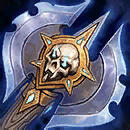
Death Knight
HP: 14 (8 + 4 Bulwark + 2 Stamina)
AP: 14
Bulwark
Type: Passive
+4 to your maximum HP pool.
Stamina
Type: Passive
+2 to your maximum HP pool.
Bloodlust
Type: Active (Quick)
Cost: 2 AP
When you take damage, instantly move +1 on the condition track at the start of your next turn for each point of damage taken.
Shielded
Type: Active (Quick)
Cost: 4 AP
Mitigate incoming damage taken by you or an ally by 3.
Still Standing
Type: Active (Quick)
Cost: 5 AP
Spend the AP cost to remain standing while at 0 HP and act as normal. You cannot recover AP while this perk is active.


Demon Hunter
HP: 10 (8 + 2 Stamina)
AP: 14
Expertise
Body: +4
Offensive
Type: Passive
When you spend atleast one success to deal damage on your turn, you can add +1 to the total amount of damage dealt this round.
Athletic
Type: Passive
+4 to Body-based checks
Stamina
Type: Passive
+2 to your maximum HP pool.
Merely a Setback
Type: Active (Quick)
Cost: At least 1 Damage taken from a Failure and 4 AP
Store all the damage you take this turn, automatically unleashing it all at once upon your next success. Does not negate damage taken. Multiple consecutive rounds may add to the stored damage.
Reckless
Type: Active (Quick)
Cost: 4 AP
Make a second /roll 20 check and combine the roll results with the first. You cannot apply any modifiers or ability points to the second roll, and it can only accrue additional damage taken and successes.


Druid
HP: 8
AP: 14
Healer
Type: Passive
When you spend atleast one success to heal damage on your turn, you can add +1 to the total amount healed this round.
Inner Focus
Type: Active (Quick)
Cost: 3 AP
When you heal an ally, they move +1 on the condition track at the start of the next turn for every point of healing done.
Inspire
Type: Active (Quick)
Cost: 4 AP
Negate up to 2 damage taken by an ally and immediately grant them 2 Damage, Healing, or AP restored.
Revival
Type: Active (Quick)
Cost: 6 AP
Restore a KO'd target, including self, to half their hp, rounded up.
Slow Burn
Type: Active (Quick)
Cost: 4 AP to activate, 1 AP per turn to keep active
Deal 1 point of damage to a target upon this perk being activated. On sequential rounds, you can continuously spend 1 AP per turn to inflict another 1 point of damage to the target. Effect ends if the target dies or AP is not spent to maintain the effect.


Evoker
HP: 8
AP: 14
Support
Type: Passive
When spending successes or using perks to affect an ally (healing, mitigation, moving them on the condition track), move yourself +1 on the condition track at the start of your next turn.
Blessing
Type: Active (Quick)
Cost: 4 AP
May do either of the following per activation:
• Move a single ally +4 on the condition track at the start of the next turn.
• Move two allies +2 each on the condition track at the start of the next turn
Infusion
Type: Active (Quick)
Cost: 3 AP
Restore 1 AP to an ally for every point of damage you do this round.
Riposte
Type: Active (Quick)
Cost: 3 AP
When making an Environment Roll, you can generate successes as if it was a Standard Roll. You can still mark yourself and allies as safe.
Triage
Type: Active (Quick)
Cost: 4 AP
Pick an ally you have affected this round with your roll. Mirror those effects onto another ally.

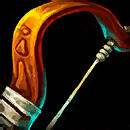
Hunter
HP: 8
AP: 14
Expertise
Body: +2
Intelligence: +2
Environmental Rolls: +2
Quick Mind and Body
Type: Passive
+2 for checks involving Body or Intelligence
Seen It All
Type: Passive
Gain +2 on environmental rolls
Companion
Type: Active (Quick)
Cost: 2 AP
May do any of the following once per round:
• +1 healing, damage done, or damage mitigated
• 5 AP; Prevent you or an ally from dropping to 0 HP (perk cannot be used again afterward)
Opportunist
Type: Active (Quick)
Cost: 6 AP
Reroll and take the better result
Self Assured
Type: Active (Slow)
Cost: 7 AP
Forgo making a roll, and gain a final result 17. This result cannot be modified with AP or by the condition track.


Mage
HP: 8
AP: 14
Expertise
Intelligence: +4
Offensive
Type: Passive
When you spend atleast one success to deal damage on your turn, you can add +1 to the total amount of damage dealt this round.
Savant
Type: Passive
+4 to Intelligence-based checks
At Any Cost
Type: Active (Quick)
Cost: 4 AP
Generate 1 success per activation of this perk. This does not change your roll result.
Onslaught
Type: Active (Quick)
Cost: 3 AP
Once per round, move yourself +1 on the condition track at the start of your next turn for one of the following:
• Each point of damage dealt
• Each point of damage healed
Reckless
Type: Active (Quick)
Cost: 4 AP
Make a second /roll 20 check and combine the roll results with the first. You cannot apply any modifiers or ability points to the second roll, and it can only accrue additional damage taken and successes.


Monk
HP: 8
AP: 14
Expertise
Body: +4
Intelligence: +2
Presence: +2
Environmental Rolls: +2
Quick Mind and Body
Type: Passive
+2 for checks involving Body or Intelligence
Strong Personality
Type: Passive
+2 for checks involving Body or Presence checks
Seen It All
Type: Passive
Gain +2 on environmental rolls
Font
Type: Passive
Restore 1 AP to yourself every turn that you do not take damage. You cannot use successes to restore AP to yourself if this perk is taken.
Riposte
Type: Active (Quick)
Cost: 3 AP
When making an Environment Roll, you can generate successes as if it was a Standard Roll. You can still mark yourself and allies as safe.

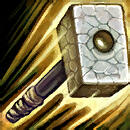
Paladin
HP: 8
AP: 14
Expertise
Body: +2
Presence: +2
Resourceful
Type: Passive
-1 AP cost to activate a Perk, to a min of 1.
Strong Personality
Type: Passive
+2 for checks involving Body or Presence checks
Blessing
Type: Active (Quick)
Cost: 4 AP
May do either of the following per activation:
• Move a single ally +4 on the condition track at the start of the next turn.
• Move two allies +2 each on the condition track at the start of the next turn
Take Cover
Type: Active (Quick)
Cost: 5 AP
Ignore your roll results. Do not take any negative penalties or suffer any negative effects this round.
Second Wind
Type: Active (Slow)
Cost: 5 AP
Restore half your health to yourself, rounded up.

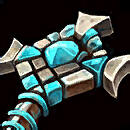
Priest
HP: 8
AP: 14
Expertise
Presence: +4
Charismatic
Type: Passive
+4 to Presence-based checks
Blessing
Type: Active (Quick)
Cost: 4 AP
May do either of the following per activation:
• Move a single ally +4 on the condition track at the start of the next turn.
• Move two allies +2 each on the condition track at the start of the next turn
Leech
Type: Active (Quick)
Cost: 4 AP
Heal yourself for 1 HP for every 1 point of damage dealt this turn.
Revival
Type: Active (Quick)
Cost: 6 AP
Restore a KO'd target, including self, to half their hp, rounded up.
Tears of Denial
Type: Active (Slow)
Cost: 6 AP
Until the end of the event, the targeted ally is saved from being brought below 1 HP once. If they suffer damage that would bring them below 1 HP, Tears of Denial prevents them from being downed, at 1 HP, and then ends. This effect can only be applied on a character once per event.

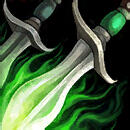
Rogue
HP: 8
AP: 14
Expertise
Intelligence: +2
Presence: +2
Offensive
Type: Passive
When you spend atleast one success to deal damage on your turn, you can add +1 to the total amount of damage dealt this round.
Silver Tongue
Type: Passive
+2 for checks involving Presence or Intelligence checks
Merely a Setback
Type: Active (Quick)
Cost: At least 1 Damage taken from a Failure and 4 AP
Store all the damage you take this turn, automatically unleashing it all at once upon your next success. Does not negate damage taken. Multiple consecutive rounds may add to the stored damage.
Onslaught
Type: Active (Quick)
Cost: 3 AP
Once per round, move yourself +1 on the condition track at the start of your next turn for one of the following:
• Each point of damage dealt
• Each point of damage healed
Slow Burn
Type: Active (Quick)
Cost: 4 AP to activate, 1 AP per turn to keep active
Deal 1 point of damage to a target upon this perk being activated. On sequential rounds, you can continuously spend 1 AP per turn to inflict another 1 point of damage to the target. Effect ends if the target dies or AP is not spent to maintain the effect.


Shaman
HP: 8
AP: 14
Resourceful
Type: Passive
-1 AP cost to activate a Perk, to a min of 1.
Infusion
Type: Active (Quick)
Cost: 3 AP
Restore 1 AP to an ally for every point of damage you do this round.
Revival
Type: Active (Quick)
Cost: 6 AP
Restore a KO'd target, including self, to half their hp, rounded up.
Shielded
Type: Active (Quick)
Cost: 4 AP
Mitigate incoming damage taken by you or an ally by 3.
Triage
Type: Active (Quick)
Cost: 4 AP
Pick an ally you have affected this round with your roll. Mirror those effects onto another ally.


Warlock
HP: 12 (8 + 4 Bulwark)
AP: 14
Expertise
Intelligence: +2
Presence: +2
Bulwark
Type: Passive
+4 to your maximum HP pool.
Silver Tongue
Type: Passive
+2 for checks involving Presence or Intelligence checks
At Any Cost
Type: Active (Quick)
Cost: 4 AP
Generate 1 success per activation of this perk. This does not change your roll result.
Companion
Type: Active (Quick)
Cost: 2 AP
May do any of the following once per round:
• +1 healing, damage done, or damage mitigated
• 5 AP; Prevent you or an ally from dropping to 0 HP (perk cannot be used again afterward)
Sacrifice
Type: Active (Quick)
Cost: 1 Health
Recover up to 3 AP to yourself for an ally.


Warrior
HP: 12 (8 + 4 Bulwark)
AP: 14
Defensive
Type: Passive
When you spend atleast one success to mitigate damage on your turn, you can add 1 to the total amount of damage mitigated this round.
Altruism
Type: Active (Quick)
Cost: 3 AP
Double the amount of damage you can mitigate when spending HP instead of successes.
Counter Attack
Type: Active (Quick)
Cost: 3 AP
Immediately deal double the damage mitigated from you or an ally at a nearby enemy.
Opportunist
Type: Active (Quick)
Cost: 6 AP
Reroll and take the better result
Still Standing
Type: Active (Quick)
Cost: 5 AP
Spend the AP cost to remain standing while at 0 HP and act as normal. You cannot recover AP while this perk is active.
Quick References
Roll Result Table
| Dice Result | Standard Roll Result | Environmental Roll Result |
|---|---|---|
| <0 | -6 Health | -6 Health |
| 0 to 4 | -4 Health | -4 Health |
| 5 to 8 | -2 Health | -2 Health |
| 9 to 12 | 1 Success | Safe |
| 13 to 16 | 2 Successes | |
| 17 to 20 | 3 Successes | Can save 1 ally |
| 21 to 24 | 4 Successes + Crit | |
| 25+ | 5 Successes + Crit | Can save 2 allies |
Spending Successes
| Cost | Effect |
|---|---|
| 1 Success | Deal 1 Damage to an enemy |
| 1 Success | Heal yourself or an ally 1 HP |
| 1 Success or Hit Point | Mitigate 1 Damage from being taken by an ally |
| 1 Success | You or an ally may recover 2 Ability Points |
| 1 Success | Move yourself or an ally +2 on the Condition Track |
| 1 Success | Apply 1 Skill push toward the narrative situation |
| 3 Successes | Grant an ally the use of a Critical effect. |
• Damage—Deal damage to an enemy. Cannot be used with environmental rolls.• Healing—Restore the health of an ally or yourself. Cannot be used with environmental rolls.• Mitigate Damage—Shield a character from taking damage. Over Mitigating damage results in a +1 move (per point of Mitigation) on the condition track for the shielded player. Health spent activating this option cannot be mitigated.• Recovering—Restores 2 Ability Points per success to yourself or an ally.• Boosting—Improve the conditions a character is operating under so that they can perform better.• Skills—Effort are often put toward skills in attempts to modify the environment or context by the players, such as efforts toward a narrative objective. Non-combat skills like Perception, Social, and Knowledge checks would fall under this category. Not all encounters will allow for this option, and some objectives might require more than 1 success to be spent for the desired effect.
The Condition Track
| Condition Track | Effect |
|---|---|
| ⮝ | ⮝ |
| +5 | +5 to all rolls |
| +4 | +4 to all rolls |
| +3 | +3 to all rolls |
| +2 | +2 to all rolls |
| +1 | +1 to all rolls |
| Normal | No Effect |
| -1 | -1 to all rolls |
| -2 | -2 to all rolls |
| -3 | -3 to all rolls |
| -4 | -4 to all rolls |
| -5 | -5 to all rolls |
| ⮟ | ⮟ |

PVP/2-Phase Roll Result Table (Optional)
| Dice Result | Attacker Roll Result | Defender Roll Result |
|---|---|---|
| <0 | -2 Health | -6 Health |
| 0 to 4 | -1 Health | -4 Health |
| 5 to 8 | 0 Success | -2 Health |
| 9 to 12 | 1 Success | -1 Health |
| 13 to 16 | 2 Successes | 1 Success |
| 17 to 20 | 3 Successes | 2 Successes |
| 21 to 24 | 4 Successes + Crit | 3 Successes + Crit |
| 25+ | 5 Successes + Crit | 4 Successes + Crit |
Optional Rules
The following rules are optional. Common optional rules will be included in the core rule document.
CUSTOMIZING THE SYSTEM
Over the years, the Conquest d20 System has been adapted by many guilds and RP organizations to run their own events with. Because v3 grew out of expanding the DM Toolkit, the customization of the system for guilds and for various group sizes was a central design pillar. We looked at how people were modifying our system to see where it fell short for them, and in expanding the toolkit, tried to address as many of those short-comings as we could.Want to add racial perks for players to choose from? Run a pirate campaign and want to let everyone take pirate related perks to customize their gameplay? Add a leveling system for your guild? Maybe different perk options for various roles within your state RP government? Hand out perks per rp campaign completed as rewards? All the above? And that's just by adding new categories of perks for your players.The system was designed from the ground up to be easy and forgiving to homebrew whatever you need. From making new perks easy to implement to adapting all manner of custom rules for extra crunch, from the 40 man epic battles to the small 5-man band of heroic (or dastardly) guildies, from facing unspeakable horror to solving social intrigues, from the pve to the pvp; we wanted a narrative-first system that made this possible.Below, you'll find a host of Optional Rules for this system.

An Elven smith forging a new blade.

Perks use charges (Player-specific, Optional)
This optional rule is not determined by the GM, but by the individual player themselves. Any player can opt into this rule, using a set number of charges to activate their perks, as was done in prior Conquest systems.When opted into, lower your AP to a max of 5, and assign each perk a number of charges per event based on what its AP cost would be.
1/event = 6+ AP
2/event = 4-5 AP
3/event = 2-3 AP
4/event = 1 AP
For every possible perk slot that was left unfilled, gain 1 extra charge to a perk of your choice. You cannot regain a perk charge once it has been spent.Perks that have an AP cost following their initial activation still require spending AP for the ongoing effect.
Event difficulty (Optional)
Use this optional rule to fine tune the difficulty of an event and how much you want players to focus on what they are contributing round by round.The amount of AP players start with can make for a good dynamic value—a way for the DM to set difficulty and vibe. The harder a scenario should be, or the less often you want them using special abilities, the lower that baseline should be set. The default is 14 for a good heroic feel that doesn't overpower the narrative with crunch, but a group that enjoys more challenging RP odds might find their sweet spot at 10 AP for their baseline.
Severe Wounds (Optional)
When players fall to 0 HP, they accumulate a -2 penalty to every roll due to their wounds. This is separate from the Condition Track and cannot be healed quickly within the scope of the event. The more often you get back up, the more your wounds will start to hold you back.The only limit to how many wounds a player can take is what the DM sets for the event, if any. Some DMs may allow you to get up indefinitely while others will limit the number of times their players can escape being KO'd
For example, if a player goes down a second time, they would suffer a persistent -4 to their rolls if they were to return to the fight.
A player can get back up after having 3 health restored to them. They return at 3hp.
Roll d# (Optional)
All rolls become /roll (20±x). So a Roll with a +5 modifier becomes /roll 25.This works for those who wish to have something less heroic and more gritty in their guild RP.The change makes better use of wow's native dice system, which is a Roll 100 or Roll X system at it's core, and moves away from the use of a tabletop d20. A d20 system in wow is helped by the use of addons, like dicemaster, but certain addons might not always be there when a rp event comes around. This has caused some ironic trouble, as people with tabletop experience easily understand a d20/roll 20 system and how it works, but those who don't come from that background find it confusing because there's nothing like it in WoW./roll (20±x) allows for diminishing returns as a +1 modifier won't eliminate 1 as a roll result, uses the same roll concept as Vehicle Battles (Conquest's wargame), and allows DMs to set relative DCs much easier. So while a drastic change on the surface, it is more inline with wow's native dice roller without addons and bypasses the downsides of flat modifiers (a +2 means anything under a result of 3 is impossible to get; tabletops get around it via adding small dice to the pool but wow's roller can't do that). And that is what makes this variant rule have a grittier tone. You can have +100 on the condition track (to /roll 120), and still be in danger of those low results because they're never truly off the table.This comes with an additional DM tool in their toolkit as well. It allows for relative difficulty to be called for by a DM as mentioned above, which can be a wonderful tool in their kit. A /roll 20 is our average, but they can call for a /roll 15 for a harder check, or a /roll 25 for an easier check. So if 8+ is a success on the result table, a /roll 10 is 30%, /roll 20 is 65%, /roll 25 is 72%, and /roll 30 is 76% and so on with diminishing returns. This pairs nicely with the condition track, expertise perks, and even the inclusion of homebrewed skills ranks.
Two-phased combat rolls (Optional)
Many rp communities prefer having an attack and defense stage for each round, especially for running smaller events. These phases are determined by the GM every time they ask for a roll. Typically, these will go back and forth, but not always. An ambush encounter may see the players always rolling as the attackers while a siege might see every round as a defender.The Attack phase more closely resembles the default roll chart. Meanwhile, the defender, due to being on the back foot and reacting, faces a general -1 to their success, as shown on the chart below.
Player vs Player (Optional)
For PvP, two players square up and both will /roll 20 at the same time. For group engagements or one vs a group, the group leaders will /roll 20 to determine initiative, and then the group will roll as either attacker or defender based on that initiative.The player with the higher roll is the attacker, having seized the initiative of the round. The player with the lower roll is the defender, being the one reacting to their opponent. If they tie, they are both considered an attacker on the table.Results are cumulative and the net effects are applied at the end of the round after everyone has gone. So if the attacker deals 5 damage, the defender may be able to react and escape—or atleast make the attacker regret it before going down.
For example, Player A and Player B are in a duel. They both roll, and Player A rolls an 8 and Player B rolls a 7. Player A is the attacker, having seized the initiative. They decide to spend a single power point to have 1 success they will spend toward damage. Player B decides to spend 10 of their Ability Points to have a result of 2 successes. They spend 1 to mitigate the incoming damage from Player A, and spend the other to deal 1 damage to player A. By the end, Player A has taken 1 damage and Player B has taken no damage.
PVP/2-Phase Roll Result Table (Optional)
| Dice Result | Attacker Roll Result | Defender Roll Result |
|---|---|---|
| <0 | -2 Health | -6 Health |
| 0 to 4 | -1 Health | -4 Health |
| 5 to 8 | 0 Success | -2 Health |
| 9 to 12 | 1 Success | -1 Health |
| 13 to 16 | 2 Successes | 1 Success |
| 17 to 20 | 3 Successes | 2 Successes |
| 21 to 24 | 4 Successes + Crit | 3 Successes + Crit |
| 25+ | 5 Successes + Crit | 4 Successes + Crit |
GM Guidelines
This next section deals with the GM side of the game. These are less rules, and more guidelines and tools to build the experience you have envisioned for your event.
GM and Adversary Moves
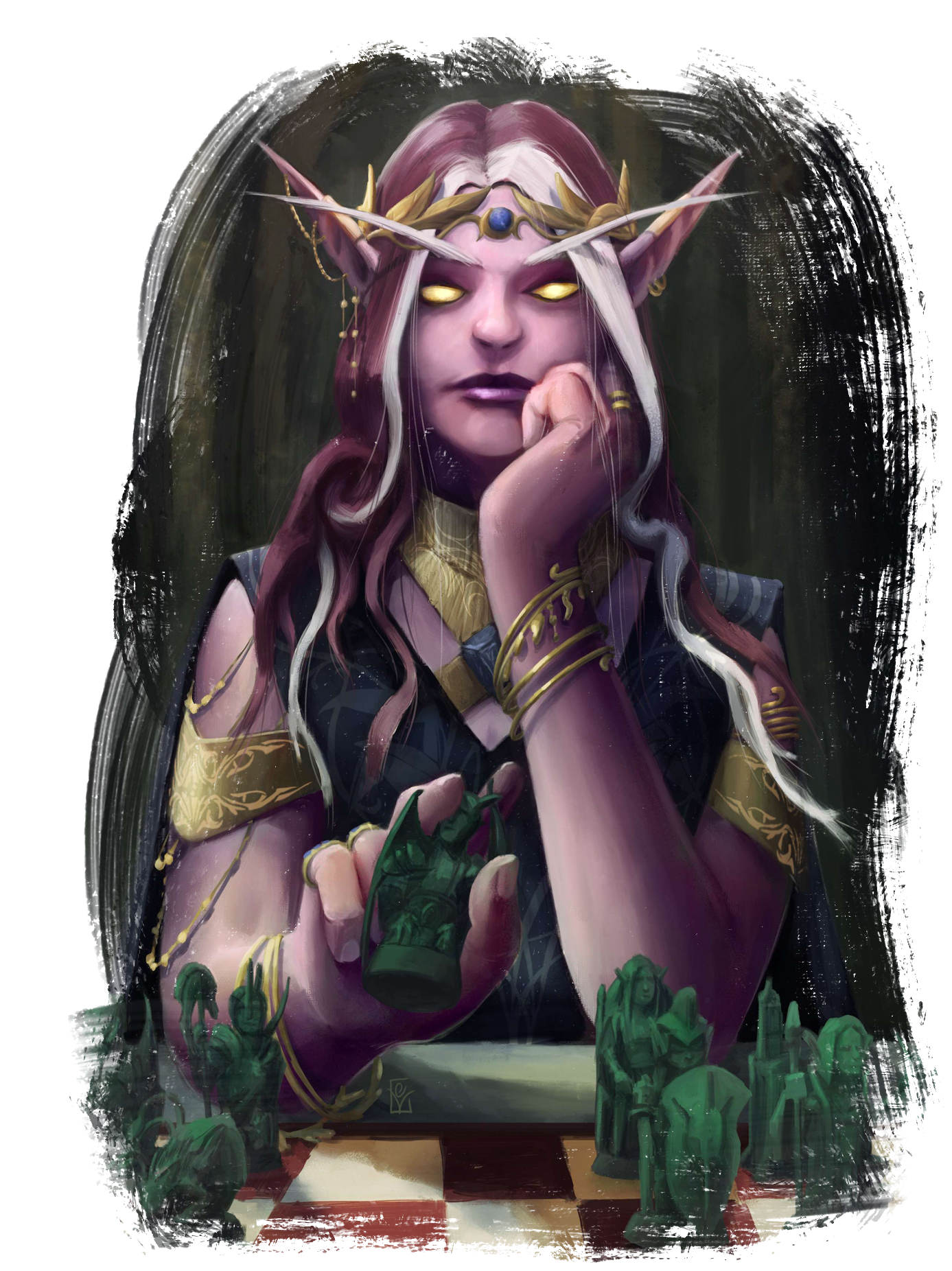
An Azsharan Magistrix, making her move in a game of wits during the War of the Ancients...
These are mechanics that can be assigned to an encounter as an environmental factor or an adversaries' special abilities, or simply incorporated as DM Moves to affect the vibe of the narrative. These are intended as a way to make adversaries more than just Hit Point sponges and to make environments feel more unique. Most of these are intended to be done as environmental rolls, regardless if they are an ability or part of the stage.As a rule of thumb, an adversary should only have a select few and only get one use of them per encounter, and an environment should generally be limited to just one effect.
These should be kept few in variety, as they are not generally known by the players and will likely require explaining the mechanic as part of the turn update.
For example, a big bad evil guy could cast "Manaburn" (Exhaust below), depleting the player's Ability Points. Similarly, the players could face "hot desert winds", and the DM calls for the same effect.
Bulwark (Environment Roll)
Examples: A bodyguard for the Big Bad Evil Guy/BBEG
An antagonist is protected by a guardian on the field. Any damage directed toward the guarded entity is split between the two instead. Alert players that crits can be spent in an additional way: to bypass this mechanic.
Buster (Environment Roll)
Examples: Wow's Soak-circle raid mechanic.
A determined number of players must volunteer to take 5 damage, forgoing an environmental roll. If that amount of players DO NOT volunteer, EVERYONE will take 5 damage. Everyone but the volunteers makes an environmental roll as normal.
Clash (Environment Roll)
Examples: A boss' rampage. A high stakes duel mid-battle.
Call out a player or a small group of players to put them front and center in the spotlight. They will make a contested roll against an adversary, and the winning team (the spotlighted players or DM) gets an immediate boon of +5 successes, or having 5 damage done to them on a fail.
Dangerous Complications (Environment Roll)
Examples: The stage changing mid-boss fight.
Each player that fails an environmental roll adds 1 point of additional damage to a pool. At the end of the round, the GM distributes the damage from the pool onto the party as they will.
Deadly (Environment Roll)
Examples: Particularly dire circumstances, raging boss
Affected players increase all damage taken by 2 until the effect ends.
Debuff (Environment Roll)
Examples: Magical Debuff, Restraint, Slowing effects, Adversaries hastened
Debuff the group of players. Instead of taking damage, they move down the condition track based on their roll. This effect lasts until the DM declares it over.
Exhaust (Environment Roll)
Examples: Burning Mana, magical sleep, draining magical effects, exhaustion, stress
Deplete 2 Ability Points instead of dealing a point of damage. If a player does not have enough Ability Points to exhaust, they take damage instead.
Frenzied (Environment Roll)
Examples: A Lich mind controlling members of the party
Player/s that fail an environmental check will become Frenzied the next round. Instead of applying damage done to their target in the next standard round, redirect the damage to other players.
Limit (Environment Roll)
Examples: Boss cannot be attacked, suppression of healing magic or a death aura, being overwhelmed on all sides.
Roll 1-3 or pick a designed effect. Depending on what is rolled, the players will have one of the 3 key ways to spend success unavailable this next turn. On a 1, they cannot deal Damage. On a 2, they cannot Heal. On a 3, they cannot Mitigate damage for allies.
Bleed
Examples: A rogue's Hemorrhage attack
In addition to taking the typical damage taken, the players receive 1 stack of bleed. They lose -1 HP per stack each round. Stacks are cleared with healing.
Chokepoint
Examples: Hostile archers behind a palisade, aerial combat
The DM declares some of the enemies are beyond the reach of normal means. In order to affect these targets, players must spend an additional success (or more) before damage is applied.Variation: Players may opt to make an environmental roll instead of a standard roll in the hope of clearing the obstacle between them and their targets. Once the obstacle is cleared for them, combat proceeds as normal.
Dangerous Neglect
Examples: The heroes being outflanked by an arriving patrol
Non-engaged targets negatively impact the party by adding a scaling intensity, either a party-wide modifier or additional damage taken, for each non-engaged enemy.
Last Stand
Examples: The sudden gut-punch of watching an ally fall in the middle of a chaotic battlefield
If a player is KO'd this round, they go out in a dramatic blaze of glory. They can mark one of their active perks, 2 max HP, or 4 max AP (their choice) to immediately make a final heroic action before they are KO'd. Whatever they choose to sacrifice is marked out for the rest of the event.
• If they choose a perk, they can activate it twice before going down, immediate and free of any cost.
• If they choose to lose HP, they can immediately spend 5 successes.
• If they marked AP, they can restore all the AP of a chosen ally and increase that ally's Max AP by 4.
Poison
Examples: A sting from a hunter's bow.
In addition to taking the typical damage taken, the players receive 1 stack of poison. They lose -1 AP per stack each round. Stacks are cleared with recovery of AP.
Momentous opportunity
Examples: The breaking of enemy morale
The GM declares a target, potentially being hidden by the Chokepoint or Bulwark effect, that when defeated offers a bonus to success rolls for the remainder of the current combat.
Out-of-time
Examples: Silence or Counterspell effects. Fear effects. Disarmed. Too little time to react.
Quick Perks become Slow. Slow perks cannot be used.
Recover
Examples: Healing of a boss, raising new undead minions, calling more reinforcements for minions groups, self reinforcing ward
The DM rolls 1-10, and the adversary recovers the amount rolled.
Reflect
Examples: Blue Dragons reflecting spells, wards, a countercharge of knights
Immediately reflect recent damage done back at every player in the group. It is advisable to not reflect all damage, but something appropriate to the encounter to make the narrative emoting matter (eg, reflecting all spells or a counter charge reflecting melee damage done). How it is distributed back at the party is up to the GM's discretion.
Relentless
Examples: Back up against the wall, Losing the battle
Push the players into a defensive stance, imposing -1 success on their successful roll results (this is also the defensive table in 2 phase combat/pvp).
Spotlight
Examples: A player revealing that, no actually, it was the Dreadlord who walked right into their trap!
Select a few players from the group, and if any of them can get a critical in the upcoming round, they can spend their crit in one additional way: They can {Star} an emote to do something big of their own design to alter the current state of the narrative. This narrative spotlight is limited only by the GM's approval.
Targeted
Examples: An assassin's sudden strike
Choose 5 potential players that could be affected (one raid group), and roll 1-5. Deal 5 damage to the individual. This damage cannot be stopped or mitigated, but cannot cause that player to fall below 1 HP.
Stage Mechanics
Stage mechanics are like Adversary moves above, but are more geared to once-per-event moments or established at the start.
Extreme Environmental Effects
Examples: The stage is set in a raging blizzard or at the intersection of powerful leylines
At the start of an event set in an extreme environment of any kind, call for a /roll 100 and report the results to the players. At the GM's discretion, campaign prepwork can move players up or down a tier.
| Roll Result | Negative Environment |
|---|---|
| 1-30 | Unaffected. No changes |
| 31-50 | Winded. -1 to environment rolls |
| 51-70 | Struggling. -1 to all rolls |
| 71-90 | Sickened. -2 to all rolls, -2 Max AP |
| 91-100 | Deathly. -2 to all rolls, -4 Max AP, take 1 additional damage on failures |
| Roll Result | Positive Environment |
|---|---|
| 1-30 | Unaffected. No changes |
| 31-50 | Confident. +1 to environment rolls |
| 51-70 | Boosted. +1 to all rolls |
| 71-90 | Stronger. +2 to all rolls, +2 Max AP |
| 91-100 | Empowered. +2 to all rolls, +4 Max AP |
Flag Drops/Party-wide failure
Examples: The villains may be winning, hearts have sunk, but the fight isn't over yet...
Sometimes, you need a scene to land its blow against the players. All of them. And drive home that no one is immune to the consequences of what has transpired. The player's flag has fallen. Roll # on the table, or pick an appropriate result, and report the effects to the players. The result gets worse the further down you go, so if you are planning to utilize this more than once, roll small at first and increase what you are rolling as needed.Flag dropped effects last until the GM says otherwise.
| Roll Result | Positive Environment |
|---|---|
| 1-3 | Everyone drops to -4 on the condition track |
| 4 | All party members lose 3 AP. If they do not have enough AP, they also lose -1 HP |
| 5 | All party members lose 2 HP |
| 6 | All party members suffer a -2 penalty on all further environmental rolls |
| 7 | All party members suffer a -2 penalty on all further rolls |
| 8 | All party members lose 4 Max AP |
| 9 | All party members lose 2 Max HP |
| 10 | All party members must mark out a Perk of their choice, or 8 Max AP if they have no perks to mark. |
Standoff
Examples: A tense moment between goblin and dwarven gunslingers, or a lightning fast duel of elven spellblades.
Standoff with an enemy, or multiple enemies. A chosen number of players may volunteer to lay everything on the line for some quick and dramatic gains.Each player will choose a single enemy to face off with and each will roll a 1-100 roll against the GM. If the player wins, they instantly eliminate their opponent from the field. If the player loses, they immediately drop to 0 HP. AP can be spent on this check to help a player roll.Upon the Standoff's conclusion, normal combat begins for the survivors.

Additional Guidelines
The system is quite robust in the range of difficulty that can be achieved for an event. An event can be lighthearted and fun, or downright terrifying and deadly—and it is entirely up to the GM. The more you are willing to throw complications at the players, the more difficult the event will become. These are heroic adventurers after all, you can challenge them as much or as little as you feel the need to.Despite common sentiment, the dice don't dictate difficulty all that much. The dice's tension only last as long as it takes for them to show their result. But the players' experienced difficulty is often wrapped up in how much of their resources they spend to handle the complications you put in their way.
Use Expertise for Environment Rolls by default
You can spice up Environment Rolls by having them correspond to one of the Expertise traits, and it is worthwhile doing this as the default for Environmental Rolls. While Expertise works well with skills usage, they can also be utilized to allow characters to shine. Dropping rocks on the party? Allow players to add their Body modifier to the Environmental Roll. Investigating/avoiding traps? Have them add their Intellect to the Environmental Roll. Fighting off the Cthulhuian horrors of the void trying to drive them insane? Let them add that Presence.
Competence Assumed
• You don't need to have players roll for everything, especially in larger groups. Assume they are competent heroes who are capable of what they claim to be so in. Let them have their moment to shine as the story progresses.• Use groups of minions more often than single targets. 1 damage = 1 kill.• You can give the group downtime when the narrative calls for it. Let them roll and ignore negative effects, or recover Ability Points through a roll based off how much downtime (ie 1-4 for a short rest) or just give them all a certain number back.
Encourage Prep Work
If players come up with creative ways to prepare for the event beforehand, you can give them one free use of Self Assured (automatic roll result of 17) in the upcoming event to be spent as a result of their prep work beforehand.
Adversary Health Guidelines
With a -6 to 6 native range table and around 14-24 Ability Points per player, players can be expected to burn through 70% of their resources by the time they deal a net 5 damage on average. As such, DM should roughly be planning event adversaries with total hp around 5x the number of players.For example, if you have 10 players, you can start planning an event to feature 50hp worth of adversaries on average. Whether this is a single boss with 50 hp, or 3 groups of minions at 10 hp per group and a boss at 20.
Write posts on Notepad/word app
Write your event posts on Notepad (or any other word processing app), and not on WoW. That way, you can scroll and read incoming posts as you type and respond live, and if you disconnect, you don't lose what you've written.
Use instances of Window's Calculator
or a Spreadsheet
It can be very helpful to use multiple instances of Windows Calculator or a Spreadsheet if you're looking to calculate damage/hp live as it comes in, especially when working without any addon support. If you want an analog option, notecards with little boxes you can cross off works well for adversaries.
DM Assistant
Consider having a DM Assistant who can answer questions for you while you write a post. Familiarize them with your event plans, and let them handle questions and mechanical assistance while you focus on running the event.
Changelog
Next Update: Nov 28th, 2025From most recent to oldest.V3.0.03 BETA (11/1/25)
• Added a Quick Start Character section in character creation
• Clarified spending HP to remitigate HP spent
• Clarified being gifted a crit does not override your roll
• Riposte clarified to "When making an Environment Roll, you can generate and spend successes as if it was a Standard Roll. You can still mark yourself and allies as safe."
• Shielded reworded "Mitigate incoming damage taken by you or an ally by 3" to avoid damage reduction (which isn't seen anywhere else and can conflict with perks people may be trying to use)
• Overcharged renamed "At Any Cost" and reworded "Generate 1 success per activation of this perk. This does not change your roll result" to clarify it can be used on bad rolls.
• Rally and Blessing combined
• Merely a setback clarified to "Cost: At least 1 Damage Taken from the Roll Result and 4 AP" and "Store all the damage you take this turn, automatically unleashing it all at once upon your next success. Does not negate damage taken. Multiple consecutive rounds may add to the stored damage."
• Onslaught changed to damage dealt or damage healed.
• Perks reorganized by speed
• Expertise category perks are no longer limited to 1
• Added Buster to DM Moves
• Glossary of Terms added
—Optional Rules—
• Remove optional rules from website: Zones, Perk Charged (Can add back in as a player-opt in when it's ready), Lingering Conditions
• Event Difficult reworded and centered on fine tuning the AP baseline
• Roll d# for gritter gameplay
—Homebrewing—
• Started third tab on the documentV3.0.02 BETA (9/30/25)
• Optional Rules moved to second tab (Google Doc)
• Severe Wounds removed/moved to optional rules
• Mitigation updated to allow for the spending of HP
• Round defined in the gameplay loop
• Environmental rolls called out as tied to a trait
• Perk description updated. 1 Role, 3 General, and 1 Expertise perk is the standard loadout.
• Agile renamed to "Seen it all" and moved to expertise
• Perk costs generally lowered
• New perks added
• Perks reorganized by speed
• Templates updated to 5 perks
• Glossary of terms
• Quick Start Character Creation section
• Expand DM Guidelines and toolkit optionsV3.0.01 BETA (9/8/25)
<Start of v3.0 Beta>
• Preliminary Carrd/Website setup
• Dungeon Master (DM) changed to Game Master (GM)
• Rename some lingering instances of Power Points to Ability Points
• Added paragraph defining standard and environmental checks
• Added explanation of Restoration and Buffing to Spending Success Sections
• Role perks clarified "When you spend atleast one success to [do x] on your turn, you can add 1 to the total amount of [x] this round."
• Readded Resourceful to Role Perks
• Take cover reworded "Ignore your roll results. Do not take any negative penalties or suffer any negative effects this round."
• Cost adjusted for Perks
• Double or Nothing reverted to Recklessness
• Templates updated
• Minor text clarificationsV3.0f (7/22/25)
• Baseline AP changed to 14
• Removed reduction of AP based off perks (Templated not updated)
• Removed 1 perk per round restrictionV3.0e (7/20/25)
• Power Points renamed Ability Points
• Perks reduce Max AP by 2 when selected. This makes perks optional, and allows for a very simple build of just HP, AP, and the condition track/modifiers to worry about.
• Clarified changes to the CT happen at the start of the next turn.
• Clarified 1 perk per turn, sans critical effects. Slow is just the ability, and Quick perks include a roll.
• Resourceful removed
• Leader renamed "Support"
• Take cover changed to "Disregard your roll results and take no action this round."
• Shielded changed to "Reduce incoming damage taken by you or an ally by 3." and AP cost lowered to 5.
• Reckless changed to "Double or Nothing"
• Overcharge reworked to be 1 success at the cost of AP, usable multiple times, and then moved you down the condition track by that much.
• Rally changed to "Move up to two allies +2 each on the condition track at the start of the next turn"
• Sacrifice lowers AP return, but can now gift that AP to allies too.
• Blessing changed to "Move an ally +4 on the condition track at the start of the next turn."
• Added new template: Adventurer
• Updated templatesV3.0d (6/22/25)
• Power Point baseline raised to 20
• Roll chart updated. Capped under 0 and 25+. Doubled negative results
• Perks costing power points was made the default.
• Added line under Perks, "A perk can only be used once per round, and twice with a crit."
• Removed "Adaptive" Perk
• Riposte changed to "When making an Environment Roll, gain successes as if it was a standard roll, allowing you to deal damage, mitigate damage, or heal allies when you normally couldn't. You can still mark yourself and potential allies as safe."
• Barbed Defense renamed "Bloodlust," text changed to "When you take damage, instantly move +1 on the condition track for each point of damage taken."
• Added "Sacrifice", "Leech", "Blessing", and "Onslaught" perks
• Eye for an Eye specified to 2 damage
• Leader perk should now synergize with Rally with the added text, "or using perks"
• PvP/2-phase table updated to be more in line with the default table
• Line added under Lingering Conditions optional rule, "This optional rule does not apply to perks, which are temporary bonuses, and only to the spending of success to move on the condition track."
• Added Adversary Health Guidelines
• Updated perks used by the class templates(6/19/25)
No mechanical changes
• Began to update trade dress and presentation
• Added DM's Guide section
• Added Class TemplatesV3.0c (6/12/25)
• Table of contents added
• Spending Success: Move yourself or an ally +2 (was +1) on the condition track
• Supportive perk changed to Leader: "When spending successes to affect an ally (healing, mitigation, moving them on the condition track), move yourself +1 on the condition track."
• Added Healer perk
• Perks renamed for more 'rule of cool' flare, per Max, especially if can mimic the VB abilities - Redemption renamed "Opportunist", Evade renamed "Take Cover",
• Self Assured PP cost up to 5.
• Revival clarified to "Restore a KO'd target, including self, to half their hp, rounded up."
• Barbed Defense perk damageV3.0a
<Start of v3.0 ALPHA>
Links

CREDITS
Project Administrator
Maxen
Previous Project Leads
Ismond
Witherseed
Elysenna
Lead Project Developer
Vessamiri
Assistant Project Developers
Leth'dezod
Graphical Assets
Vessamiri
D20 Credits
Ability Points—Helping Hands (WRA); Lyastei and Loviattar
Active (Slow/Quick) Perks—United Rose D20
Special Thanks
To the Valdrakken Accord for their thoroughness in testing.To House Firavel for repeatedly putting the system through its paces.To all our GMs, Testers, Moderators, Artists, and everyone who helped make this possible!

Feedback
How do I submit feedback regarding the Conquest D20 system, including recommended changes or suggestions for perks, abilities, etc.?If you have a question regarding how to operate within the system, such as how to build a character sheet, then feel free to ask anyone familiar with the system. These questions can also be directed toward any Project Developer who should have the answer to any questions you have. If they are unable to answer your question, or you would like to recommend changes or offer suggestions that would alter the system, please submit them to the Lead Project Developer. The Lead Project Developer is Vessa/Sidhanei.

Meet the Dev Team:
Vessamiri, Leth'dezod